In the ever-advancing world of automotive technology, the Anti-Lock Braking System, commonly known as ABS, sits at the forefront of safety innovations. A crucial component of the ABS is the ABS sensor, a little-known hero that plays a massive role in ensuring your vehicle’s stability and control during emergency braking situations.
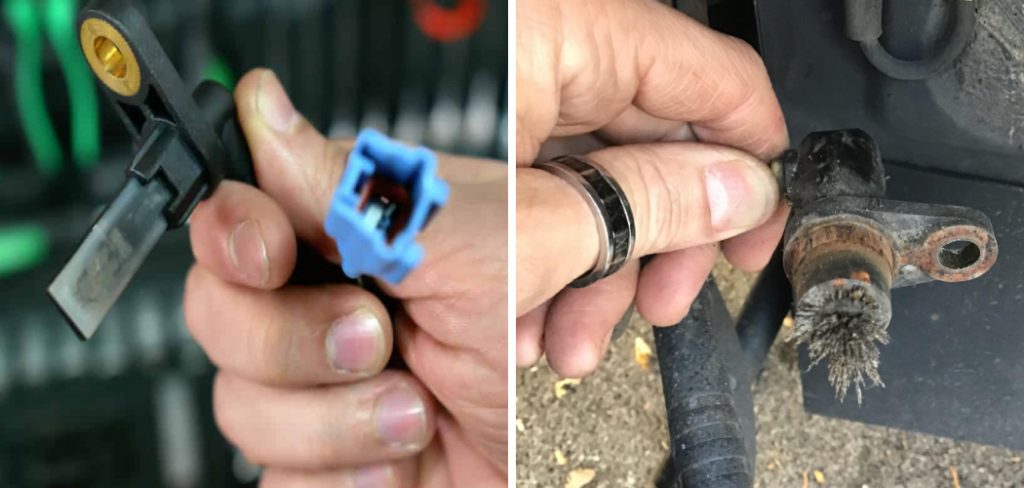
This detailed guide is tailored for both the DIY enthusiast and the professional technician, walking you through the process of how to check abs sensors to maintain the pristine safety features of your car.
Understanding ABS Sensors: The Silent Guardian of Your Brakes
Before checking the ABS sensors, it’s essential to understand what they are and how they function. ABS sensors, also called wheel speed sensors, are located near each wheel and monitor the speed at which the wheels rotate. They send this information to the ABS control module, which can then apply or release the brakes as needed, preventing skidding and allowing the driver to maintain steering control.
Signs of ABS Sensor Issues: Is a Check Required?
Indications of a malfunctioning ABS sensor usually manifest in the form of warning lights, strange noises, or performance issues:
- ABS Warning Light: The most obvious sign of sensor trouble is activating the ABS warning light on your dashboard.
- Strange Noises: You may hear unusual grinding or humming from your brakes, particularly during slow stops or turning.
- Decreased Braking Performance: When you need to brake hard, you may notice the brakes locking up or failing to sense when to release brake pressure as the wheels change speed.
Tools and Equipment Needed for the Task
For this task, you’ll need a few specific tools to properly inspect the ABS sensors:
- Basic Tool Set: This includes wrenches, pliers, and screwdrivers.
- Digital Multimeter: Essential for measuring resistance and voltage.
- OBD-II Scanner: Provides diagnostic trouble codes (DTCs) for troubleshooting.
- Vehicle Service Manual: A reliable reference for your specific vehicle’s sensor locations and specs.
How to Check ABS Sensors: A Comprehensive Guide for Vehicle Safety
Step 1: Wheel Inspection
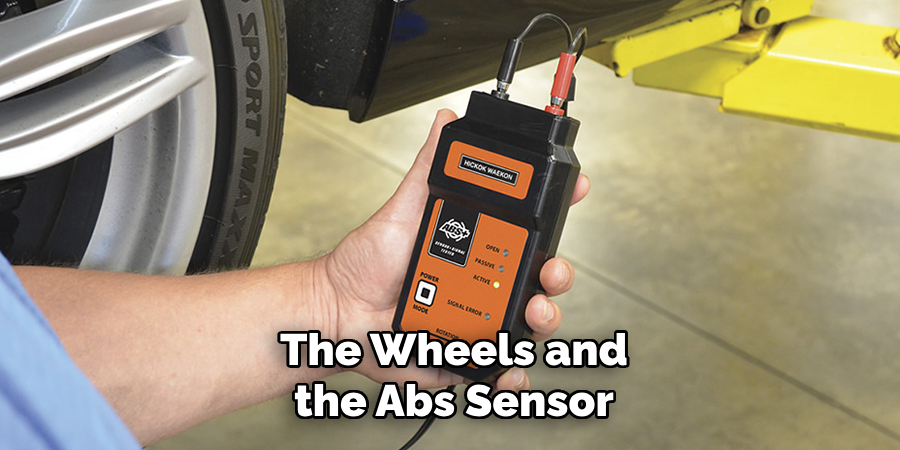
Begin by conducting a physical inspection of the wheels and the ABS sensor. Look for any obvious signs of damage, such as cuts in the wires or loose connections. Also, ensure no debris or buildup could interfere with the sensor’s ability to function.
Step 2: Sensor Visual Inspection
Once the wheels are off, closely examine the ABS sensors. They should be free from rust and corrosion, as these can affect their readings. If there’s excessive buildup, carefully clean the area around the sensors using a gentle solvent and a soft brush.
Step 3: Sensor Resistance Test
This test requires the use of a digital multimeter. Set the multimeter to measure resistance, and then disconnect the ABS sensor to take a reading. Compare this reading to the manufacturer’s specifications in your service manual. Any significant deviation would indicate a faulty sensor.
Step 4: Sensor Voltage Test
Reconnect the sensor and set your multimeter to measure voltage. Start the vehicle by hand, rotate the wheel, and observe the readings on the multimeter. You should see consistent voltage changes as the speed of the wheel varies. No change or erratic changes could signify a problem.
Step 5: Sensor Signal Test
Using an OBD-II scanner, check for DTCs related to the ABS system. These codes will give you a precise location to focus on, whether it’s the sensor itself, the wiring, or the control module. Address the specific issue as indicated by the codes.
Additional Tips and Considerations for Checking ABS Sensors
Our previous listicle covered the essential steps for checking ABS sensors. However, a thorough diagnosis requires delving into more than just the basics. In this listicle, we’ll explore additional considerations that can elevate your understanding of ABS sensors and further refine your troubleshooting skills.
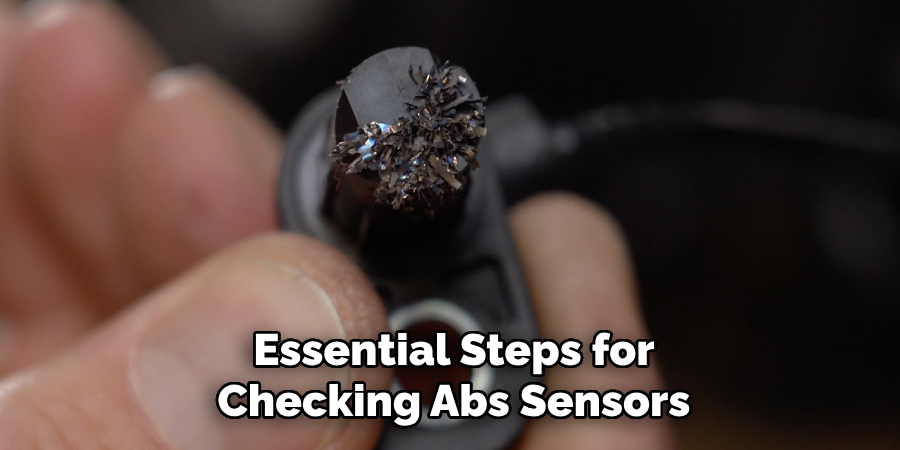
Revisiting the Basics
Before we explore more intricate diagnostic procedures, it’s essential to note that the foundation of any sensor check lies in understanding the basics. This includes knowing the location of the ABS sensors on your vehicle, understanding the specific symptoms of ABS sensor issues, and familiarizing yourself with any relevant diagnostic trouble codes (DTCs).
Visual Inspection Is Key
Begin by visually inspecting the ABS sensors and their wiring. Often, the sensors can become damaged, or their wiring can wear over time. Look for breaks, frays, or cuts in the wiring that could result in signal loss. Additionally, check for corrosion or rust around sensor connectors, as this can interfere with the sensor’s ability to send a clear signal.
Snug Connections Are Essential
Faulty readings from ABS sensors are not always the sensor’s fault. Loose or improperly connected sensor wiring can lead to inconsistencies and trigger false warnings. Ensure each sensor is firmly connected to the wiring harness and that it is in good condition.
The Art of Sensor Cleaning
One of the easiest yet most neglected maintenance tasks is sensor cleaning. Over time, sensors can become coated in road grime, leading to erratic readings. Use a soft cloth or a specialized sensor cleaning brush to gently remove dirt and debris. Be careful not to damage the sensor during this process.
Testing Sensor Signals
A more advanced step in diagnosis is testing the output signal of the sensors. Depending on the sensor type, a multimeter can be used to check the sensor’s resistance or voltage. For a passive magnetic sensor, resistance should change with wheel speed. If using a scan tool, look for any irregularities in the signal or DTCs related to the ABS system.
Wheel Speed Sensor Health Check
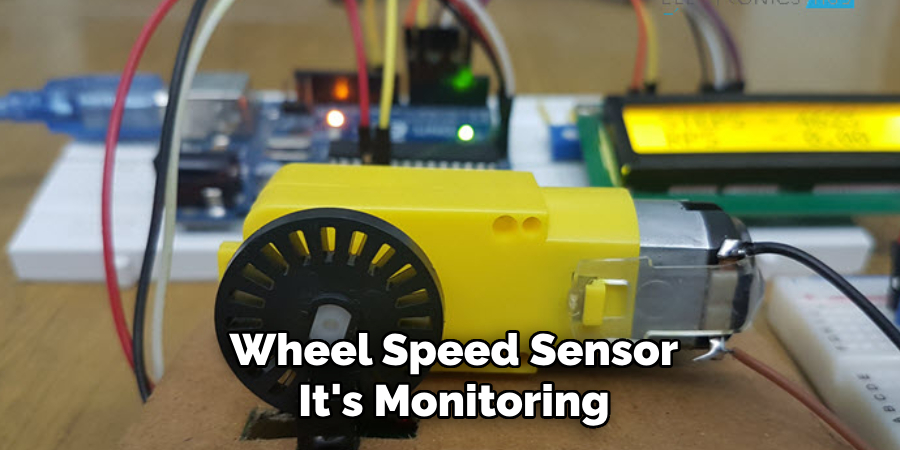
An ABS sensor is only as good as the wheel speed sensor it’s monitoring. This means that the overall condition of the wheel speed sensor, including its mounting and gear, can affect the ABS sensor’s performance. Ensure the sensor is free from any physical damage and that it can read the trigger wheel correctly.
Understand the Predictive Factors
Factors such as the proximity of the sensor to the trigger wheel, the air gap, and the condition of the wheel bearing all impact sensor performance. A too-small air gap, misalignment, or a malfunctioning wheel bearing can all lead to erroneous ABS sensor readings.
Consider the Environment
Environmental factors, like extreme temperatures or conducting the sensor check in a wet or dirty environment, can give you false results. Try to perform a sensor check in a clean, dry area with a moderate temperature. Doing so reduces the chances of misdiagnosis and keeps you safe while working on your vehicle.
Revisit Diagnostic Resources
Take advantage of the wealth of information available online and in print. Revisit your vehicle’s service manual and look for manufacturer-specific guidance. Additionally, check forums or online communities for other owners’ experiences with similar ABS sensor issues.
Know When to Seek Professional Help
Even with the most diligent inspection, some issues may require the expertise of a professional. If you find any inconsistencies in your initial checks or if you are uncomfortable with any diagnostic steps, do not hesitate to seek the assistance of a qualified mechanic or technician. Their expertise can save you time and ensure the ABS operates at its peak performance.
Frequently Asked Questions About ABS Sensor Diagnostics
Q: How Often Should ABS Sensors Be Checked for Maintenance?
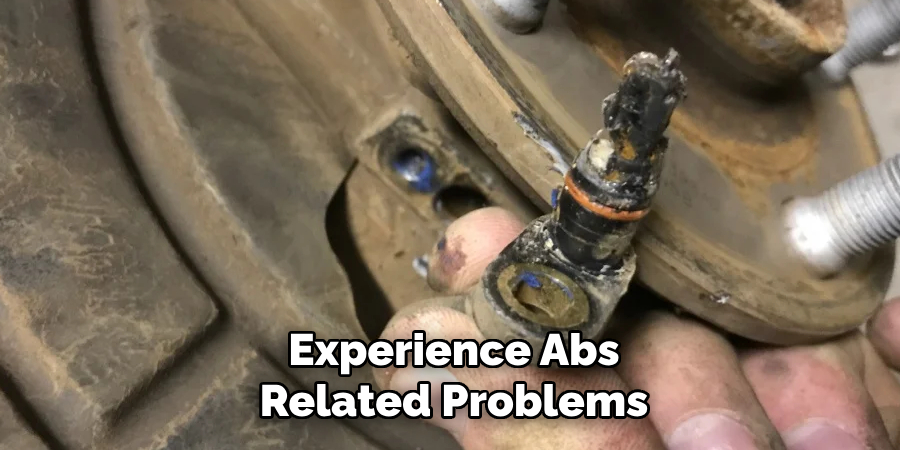
A: ABS sensors do not have a specific maintenance schedule, but it is recommended to inspect them regularly, such as when you perform brake service or if you experience ABS-related problems or illuminate warning lights.
Q: Can I Clean the ABS Sensors Myself?
A: Yes, the vehicle owner can usually clean ABS sensors. Simply use a soft cloth or brush and a gentle cleaner to carefully remove debris from the sensor surface without damaging it.
Q: What Are Common Symptoms of A Failing ABS Sensor?
A: Common symptoms include the ABS warning light coming on, less responsive brake pedal, brakes locking up, or noticing that the ABS is not engaging when needed, often during an emergency stop.
Q: Is a Wheel Alignment Necessary After Replacing an ABS Sensor?
A: A wheel alignment isn’t typically required after replacing an ABS sensor unless the sensor replacement involves significant disassembly of steering or suspension components.
Q: Will ABS Issues Cause the Car to Fail a Safety Inspection?
A: Yes, if the ABS warning light is on or if the ABS is not functioning properly, it can cause the car to fail an inspection, as it’s a critical safety feature.
Conclusion: Steering Towards Safeguarding Your Brakes
Your vehicle’s ABS is intricate and essential for road safety, and the ABS sensor is a linchpin in the system’s operation. Following the steps outlined in this guide, you can ensure that your ABS sensors are in prime condition, contributing to a safe and controlled driving experience. Remember, a small, periodic inspection can prevent a potential brake system failure, giving you peace of mind as you navigate the streets.

About
JeepFixes Team is a skilled author for Jeep Fixes, bringing 6 years of expertise in crafting a wide range of jeep fixes. With a strong background in jeep fixes work, JeepFixes Team’s knowledge spans various types of fixtures, from decorative pieces to functional hardware, blending precision with creativity. His passion for jeep fixes and design has made him a trusted resource in the industry.
Professional Focus:
Expert in Jeep Fixes : JeepFixes Team aesthetic specializes in creating durable and innovative jeep fixes, offering both appeal and functionality. His work reflects a deep understanding of jeep fixes techniques and materials.
Sustainability Advocate : He is dedicated to using sustainable practices, ensuring that every fixture is crafted with eco-friendly methods while maintaining high-quality standards.
In his writing for jeep fixes, JeepFixes Team provides valuable insights into the latest trends, techniques, and practical advice for those passionate about jeep fixes, whether they are professionals or DIY enthusiasts. His focus on combining artistry with engineering helps others discover the true potential of jeep in design.
